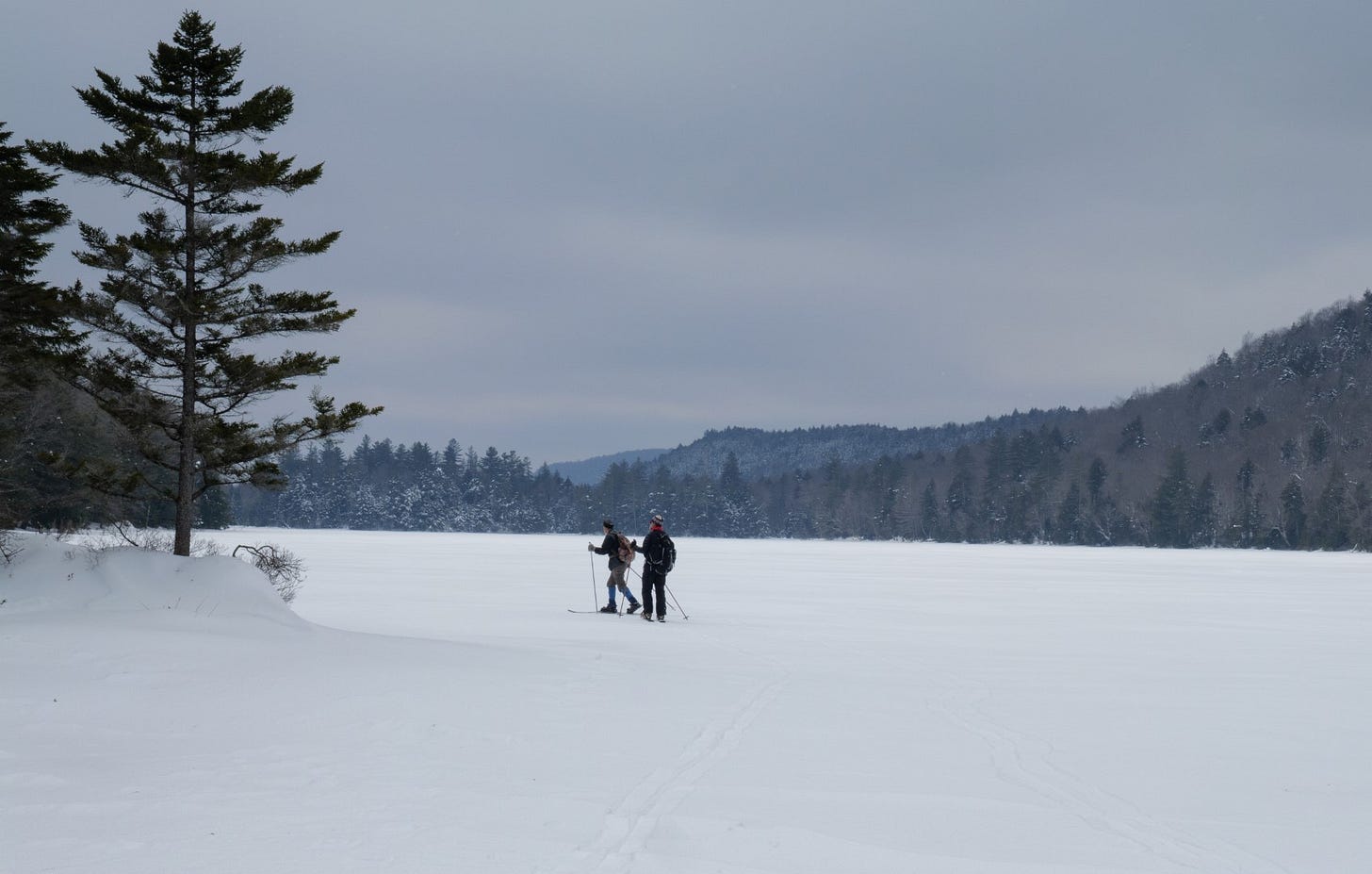A Sense of Place
Dispatches from the Adirondack Core
How do you communicate a sense of a place? Why do we find some places appealing and others less so? Beauty, as always, is found in the eye of the beholder.
The Adirondacks speak to me, I can't say exactly why. The region has distinct characteristics, unique even. Ecologically, boreal remnants from the last ice age mix with northern hardwood-conifer forests, with southern hardwoods elbowing in from all sides.
Geologically, the Adirondack region is a dome shaped upland, with a central region above 1500 feet elevation and several hundred mountains rising from that base; a wandering lobe of the Canadian Shield pushing against the Appalachians.
Tiny mountain communities are separated from surrounding population centers by long, twisty drives and a deep sense of stepping back in time. Blackfiles, punkies and mosquitoes help keep the outside world at bay, along with winters that can start in October and drag on through April.
The year round population has been slowly ebbing away for decades. The mining jobs of the past are mostly gone and mechanized logging doesn’t employ sufficient numbers. Local government jobs, tourism and second homes keep the economy on life support.
But even with all of this, the defining characteristic, the one thing that makes the adirondacks unique, is the Adirondack Forest Preserve, the regional boundary marked by a blue line first drawn on maps in the 1890s. All the lands of the preserve, owned by New York State, are set aside, they cannot be sold and the timber cannot be cut. Those far reaching restrictions were written into the New York State Constitution in 1894, an act of forsight that is hard to imagine today. The Adirondack Park*, now encompasses 6.2 million acres. That’s big, an overused comparison notes that this area is larger than Yellowstone, Yosemite, The Grand Canyon and Glacier National Parks combined. Overused, yes, but effective.
New York State owns over 2.6 million acres of that total and an additional 700,000 acres are privately owned with development limited by conservation easements. The State imposed regional zoning in the early 1970s with the creation of the Adirondack Park Agency. The APA manages development on all the lands in the park, including private lands, restrictions that have not been universally well received.
All of this, taken together, make this place different. My interests are in ecology, forestry, historic maps, outdoor recreation and photography. I plan to post weekly updates to this newsletter sharing what is going on outside in the central Adirondacks where I live. The endless variation in the weather plays a big part in that, and layered onto the progression of the seasons, creates an ever changing set of conditions. I’d like to know what the birds and trout lillies know, and when I catch a glimpes I’ll share it. I'll also mention when the skiing is good, the blackflies are bad, and when the gray fox that lives near my house is making that ungodly scream that we hear each year in June.
This post is already long, so here’s a very short first installment;
February 24, 2025 - Long Lake NY
For the past few weeks, backcountry skiing (and pretty much any activity that relies on snow) has been world class. The snow is deep and the lakes and ponds are solidly frozen. **
This is rapidly becoming a very hard winter for wildlife. Deep snow and a long string of nights with temperatures below zero (Farenheit) have put pressure on everything that wanders our woods. I'll have much more to say about this in upcoming posts.
More to come, if this interests you, please subscribe. I’ll thank you in advance.







